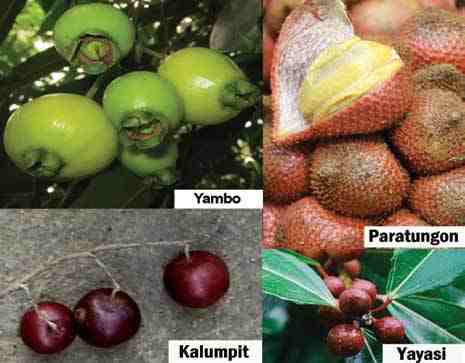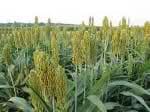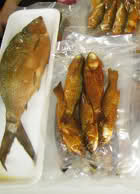While cereals such as rice and corn are the staple food in Asia, legumes are increasing in importance as sources of nutrition for both humans and the soil. With the growing demand for food, especially rice and corn, farmers are prone to resort to monocropping, a farming practice which not only favors pest infestation and… Continue reading When your food takes good care of you and the soil, too!
Tag: BAR
Powderized malunggay expands uses as food ingredient
The Moringa oleifera, locally known as malunggay is a perennial vegetable tree proven to be highly nutritious with leaves, young pods and young inflorescence as the main edible parts. It is known to provide significant amounts of minerals, proteins, vitamins, beta-carotene, amino acids and an array of medicinal benefits. The gram-for-gram nutritional data comparison between… Continue reading Powderized malunggay expands uses as food ingredient
Violet sweetness: Ubi’s full potentials uncovered
In the provinces, “ubi” or purple yam is consumed as boiled root crop and as an ingredient to local dishes and sweets. Today, this root crop is also gaining popularity as flavoring and ingredient to a wide array of food products – from ice cream to cakes to candies to wines, etc. Ubi or purple… Continue reading Violet sweetness: Ubi’s full potentials uncovered
Promoting the less-known, phytochemical-rich Pinoy fruits
Most young people nowadays are familiar with apples, grapes, plums, peaches, cherries, or pears. These are fruits that the Philippines imports from other countries because they only grow in cold climates. Meanwhile, indigenous fruits like anang, sapote, yambo, sapinit, katmon, kalumpit, lipote, binukaw, or paratungon are often given the boggled look and are being overlooked,… Continue reading Promoting the less-known, phytochemical-rich Pinoy fruits
Project on Quail Raising Shows Promising Results
The Bureau of Agricultural Research (BAR) funded a project on quail production titled, “The Economics and Impact Evaluation of Quail Raising”, a 24-month undertaking conceptualized by the Bureau of Animal Industry-National Swine and Poultry Research and Development Center (BAI-NSPRDC) based in Tiaong, Quezon. Image: BAR
Growing Sweet Sorghum
Growing Sweet Sorghum. Sweet sorghum (Sorghum bicolor (L.) is a plant that looks a lot like corn but with the grain on top rather than to the side. Sweet sorghum is being promoted as major source of bioethanol for addressing the energy problem in the country but it goes beyond that as it also provides human food, livestock feed and forage, and organic fertilizer. Hence, the 4Fs in sweet sorghum production: Fuel, Food, Feed/Forage, Fertilizer.
Spice-Cured Tinapa
Spice-Cured Tinapa, How to make Tinapa, Tinapa Making. Smoked fish locally known as tinapa is very popular & has become part of the Filipino meal, especially during breakfast.
Sweet Sorghum Bagasse: Excellent nonwood source for handmade papermaking
Since its introduction into the country in 2005, sweet sorghum (Sorghum bicolor L. Moench) has become an important crop for research and development (R&D) given its potential as a feedstock for bio-ethanol production. Aside from being a biofuel source, sweet sorghum was further discovered for its other equally important uses-food for humans, feeds and forage… Continue reading Sweet Sorghum Bagasse: Excellent nonwood source for handmade papermaking
Soon to hit the market: An anti-diabetic, natural sweetener from sweet sorghum
A natural sweetener from sweet sorghum syrup will be hitting the market soon. And it comes in fine, milky-looking powder form. When asked how different the sweet sorghum sweetener is from the commercially available sweetener in the market, Mr. Antonio S. Arcangel, general manager of the Bapamin Enterprise, had no qualms in proudly stating the… Continue reading Soon to hit the market: An anti-diabetic, natural sweetener from sweet sorghum
Potential food products from “Batanes berries” explored
Batanes is not only visually known for its picturesque landscapes of verdant rolling hills and lush mountains, its iconic stone houses, its raw climate, and its unique cultural heritage. Batanes is also home to an indigenous tree, Arius (Podocarpus costalis), which the lvatans referred to as “Batanes pines”. The tree, which grows 1-2.5 meters in… Continue reading Potential food products from “Batanes berries” explored
Abalone: Don’t judge the snail by the shell
Gone are the days when blue whales, great white sharks and bottlenose dolphins dominate the seas. For the longest time, these majestic sea creatures were the focus of human interest. But the tides of change have washed other equally interesting species ashore – one of them, is the abalone. Albeit strange-looking creatures, these sea snails… Continue reading Abalone: Don’t judge the snail by the shell



